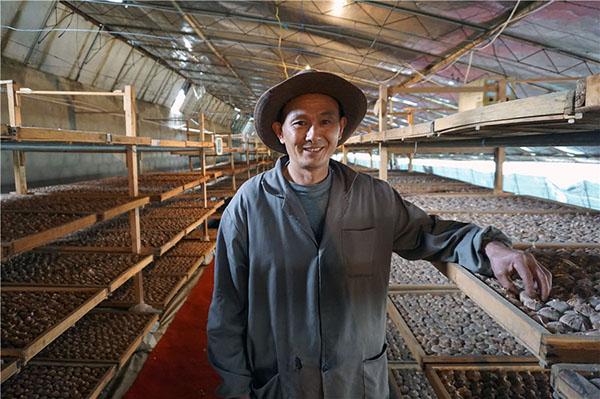 |
|
Wu Yonghong, 50, is a Tibetan saffron planter in Lhasa. Wu, originally comes from Southwest China's Sichuan province and started to work in Tibet in 2006. Some Tibetan saffron can be sold for up to 300 yuan ($46.95) per gram. Wu only reunites with his family who live in Chengdu, capital city of Sichuan province, during holidays. [Photo by Wang Zhuangfei/chinadaily.com.cn] |
Tibet's GDP increased by 281 times in 50 years
Tibet's GDP soared from 327 million yuan in 1965 to 92.08 billion yuan ($14.5 bln) in 2014, a 281-fold increase, a government white paper published Sunday said.
It showed that under the system of regional ethnic autonomy, Tibet's economic and social development has achieved leapfrog development by constantly reaching higher levels, according to the white paper titled "Successful Practice of Regional Ethnic Autonomy in Tibet."
Since 1994, the local GDP has grown at an annual rate of 12.4 percent on average, registering double-digit growth for 20 consecutive years. Local fiscal revenues increased from 22.39 million yuan in 1965 to 16.475 billion yuan in 2014, an average annual increase of 14.46 percent, further enhancing Tibet's self-development capabilities, the paper said.
People in both urban and rural areas are living a richer and fuller life as their incomes increase rapidly. In 2014 the per capita disposable income of urban residents reached 22,016 yuan, a 38-fold increase, or an average annual increase of 10.7 percent compared with 565 yuan in 1978; and that of farmers and herdsmen was 7,359 yuan, representing an average annual increase of 10.9 percent, according to the paper.
Both urban and rural residents' living conditions have greatly improved. Tibet took the lead in 2006 in initiating low-income housing projects for local farmers and herdsmen. By the end of 2013, the Region had appropriated 27.8 billion yuan and finished building 460,300 low-income houses, said the paper.
Central govt provided 648 bln yuan to Tibet
From 1952 to 2014, China's central government provided Tibet with financial subsidies totaling 648.08 billion yuan, a white paper on Tibet published on Sunday said.
The amount accounted for 92.8 percent of Tibet's public financial expenditure, according to the white paper titled "Successful Practice of Regional Ethnic Autonomy in Tibet", which was published ahead of the 50th anniversary of the founding of Tibet autonomous region.
Since the Third National Symposium on Work in Tibet in 1994, the central government has put into effect the policy of pairing-up support for Tibet, whereby 60 central state organs, 18 provinces or municipalities directly under the central government, and 17 centrally managed state-owned enterprises have paired up with various areas of Tibet in order to provide assistance to them, the white paper said.
Over the last two decades, 4,496 outstanding officials and 1,466 professionals have been sent to work in Tibet in seven batches; 7,615 assistance projects have been carried out; and 26 billion yuan has been invested in Tibet, mainly directed at improving infrastructure and the quality of life.
All of this assistance has made an enormous contribution to Tibet's social and economic development, according to the white paper.
